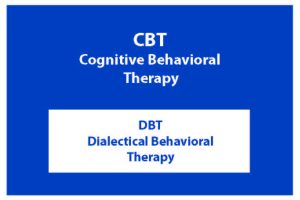Category: Blog
 Anna I. Guerdjikova, PhD, LISW, CCRC
Anna I. Guerdjikova, PhD, LISW, CCRC
Director of Administrative Services, Harold C. Schott Foundation Eating Disorders Program
Lindner Center of HOPE
 Anna I. Guerdjikova, PhD, LISW, CCRC
Anna I. Guerdjikova, PhD, LISW, CCRC
Director of Administrative Services, Harold C. Schott Foundation Eating Disorders Program
Lindner Center of HOPE
For many families, the start of the school year means the start of activities, socialization, and helpful structure. For others, it signals the start of anxiety – anxiety about grades, socializing, separation from loved ones, and the like. Anxiety is very common in childhood and adolescence and often does not require mental health intervention.
Common childhood fears include:
However, some children may develop clinical levels of anxiety, warranting attention from a mental health provider. It is estimated that 9% of youth ages 3-17 have had an anxiety disorder. The prevalence rises as children move into adolescence.
If mild anxiety is normal and expected, how do you know when it is a problem?
It might be a problem if anxiety is…
…getting in the way of school.
…getting in the way of friendships or personal goals.
…negatively impacting their mood.
…causing significant strain on the family.
So, what can I do as a parent?
It can be highly distressing to witness a child suffering. Parents may also find it frustrating if their child cannot or will not engage in developmentally appropriate activities due to anxiety (e.g., go to school, complete chores, sit at the dinner table). This can make it hard to know what to do to help
First, identify whether the fear is based on a true threat. Use your judgment here, but if there is clearly a threat or the anxiety is in proportion to the situation, validate and support your child. And just because a fear is valid, it is not always solvable or preventable. Encourage your child to tolerate the anxiety and convey your confidence in their ability to cope.
For anxiety that seems out of proportion to the actual threat, it can be helpful to educate your child. Many young children are still learning about what is dangerous and what isn’t. However, if your child comes to you repeatedly to get reminded or reassured that they are okay, this may no longer be helpful.
Encourage approach coping. Research tells us that overtime, with repeated exposure to feared situations, anxiety will reduce. Avoidance can reinforce anxiety in the long run. Try encouraging your child to engage in activities that they are avoiding. Don’t allow them to avoid doing what is expected in your house or given their developmental level.
This may involve facing your own distress. When you see your child in distress repeatedly, it is normal to become overprotective. You may start anticipating what they fearand protect them. Parents do this because seeing your child in distress is HARD, and it can feel cruel to maintain expectations (e.g., child to sleep alone in their own bedroom) when they are visibly upset.
Just remember that overprotectiveness is NOT helpful because:
Positive reinforcement. Acknowledge how difficult it is to be brave and praise your child when they go outside of their comfort zone. Implementing tangible rewards can also be helpful in motivating children to face their fears.
Differential attention. Sometimes, families can get into a pattern where the anxious child gets more attention when fearful. This can inadvertently reinforce anxiety and dependency. By providing relatively more attention when children are engaging in brave or expected behavior, you can help to reverse this pattern.
Modeling. Children learn by watching you, so keep an eye on what you are teaching them through your actions. When you can, demonstrate bravery and willingness to mess up.
Scaffolding. Scaffolding can be a very useful technique when the behavior change needed is too challenging to be expected all at once. It involves providing enough support for your child to engage in a desired behavior (e.g., school) and then slowly reducing that support overtime.
If you think your child may have an anxiety disorder, talk to your pediatrician or a mental health provider. And if you need extra help, seek advice from a professional. Many providers also offer tailored education and parenting support.
 By: Lindsey Collins Conover, PhD
By: Lindsey Collins Conover, PhD
Lindner Center of HOPE, Staff Psychologist
Lindner Center of HOPE, Staff Psychologist
Plants that have psychedelic properties have been used across all continents for centuries to aid in rituals, recreation and in healing. Over time, researchers have found that psychedelic medicines can also be profoundly effective in treating mental illnesses such as depression and anxiety and in ameliorating the effects of trauma.
Although a psychedelic medicine can be derived from a plant or created in a lab, the user will experience what can be described Laurie Little, PsyD as non-ordinary or altered states of consciousness. These states may include hallucinations, unusual perceptual or sensory experiences or an altered sense of space and time. Many users of psychedelic medicines also report profound experiences of inner peace, compassion towards themselves and others and deeply meaningful spiritual realizations. When combined with psychotherapy, psychedelic medicines have the potential to heal in ways often not seen with traditional therapies.
The psychedelic medicines that are most often being studied with mental health conditions are psilocybin (derived from mushrooms), LSD, Ketamine, Ayahuasca and MDMA. There have been numerous studies showing the effectiveness of psychedelic medicines on treatment resistant depression, end of life anxiety, Obsessive Compulsive Disorder, eating disorders and substance use disorders.
One of the most rigorously studied medicine is MDMA for the treatment of Post-Traumatic Stress Disorder (PTSD). In studies conducted by the Multidisciplinary Association for Psychedelic Studies (MAPS), 88% of participants with severe PTSD experienced a significant reduction in their symptoms and 67% no longer met criteria for PTSD only two months after their treatment.
The question remains, why is the treatment so effective? What is it about the combination of psychedelic medicine and psychotherapy that is so profoundly healing?
One possible theory is that psychedelic medicines offer the user an opportunity to look at difficult or traumatic experiences through a new lens that they have never had before. A psychedelic experience can potentially slow down the experience of time, engender feelings of safety and compassion, provide profound experiences of meaning and purpose and foster or deepen a connection to a higher power. Many of these experiences when applied to processing an old wound or trauma can have a profoundly healing impact.
Case Vignette:
John Doe is a veteran who has seen horrors that most of us cannot imagine. He has spent the better part of his adult years struggling with recurring nightmares, intrusive thoughts and strong feelings of survivor guilt and shame. He lives alone, avoids most people when he can and spends most of his time ruminating about what he should have done differently in his life.
At the behest of his family, John has tried traditional psychotherapy, but has gotten so overwhelmed by symptoms of panic and flashbacks, that he quits. It is too painful to talk about and he assumes it won’t help.
However, when John was given the opportunity to participate in an MDMA assisted therapy session, he was intrigued. He had been hearing more and more about how psychedelics could help with trauma but was afraid to feel hopeful. He had been resigned to feeling this way for so long. He agreed to give it a try.
While taking MDMA, John felt an alert state of consciousness, yet he felt calm and safe in a way that he had not felt for years. He felt at peace and relaxed. When he was gently guided to recall aspects of his past, he did not resist or feel panic like he had before. He was able to recall the events with a certain kind of distance. He could understand now that he was just doing what he could to survive. He could see now for the first time in his life that his so called “enemies” were also doing what they could to survive. He began to realize how true that was for all of the world. After that initial session of MDMA assisted therapy, John was then able to engage in traditional therapy in a way he never could before.
Although many researchers and therapists are aware of how profoundly helpful these medicines can be, there is still a great deal of stigma associated with these medicines. Because these medicines are still illegal in the United States, desperate patients are either travelling to other countries or are finding therapists who are privately using these medicines through “word of mouth”.
The Food and Drug Administration gave approval for certain psychedelic medicines to be researched, as long as they were held to the same standards as other pharmaceutical medications. This has led to a resurgence of new studies showing the safety and efficacy of psychedelic medicines for a multitude of mental health conditions. It is projected that several psychedelic medicines (including psilocybin and MDMA) will become legal and available for therapeutic use within the next one to two years.

The sun is shining; the days are longer. Summer is approaching. For some, summer is a break from study or work. For others, it may be an opportunity to take a week of vacation to relax and rejuvenate. Whether it is a two-to-three-month break, or simply more time in the evening to enjoy the sunshine, it is a time for which most look forward. It is often a time of joy, laughter, and reprieve. Summer is associated with rest and play, all of which can promote positive well-being. And I embrace all of it.
However, I am also keenly aware of the various tragedies we have collectively experienced over the recent months. With the “last day of school” and the “first vacation of the summer” pictures also come news of mass shootings, war, and other difficult events. There is exposure to pain and suffering on multiple levels, whether indirectly or directly.
Thus, I get the sense “the sun is shining, but it is also dark!” I find it necessary to acknowledge the current conflicting duality of our reality and the distress which many are experiencing, while sharing a few reminders to help us navigate through.
First, during times like this, it is crucial to recognize it is normal to have a plethora of intense thoughts and feelings, as well as an urge to act. It is also expected there will be differing viewpoints and ways these events affect individuals based on a variety of factors.
Second, it is important to highlight there are times when words are insufficient to convey the depth and intensity of feelings or to comfort adequately. Perhaps we don’t know anyone personally who has been directly affected by one of the current tragedies. Yet, we have been impacted. We may find ourselves juggling varying thoughts and feelings and struggling to put these into words. I would invite us to lean into what we are experiencing in our bodies. Accept there may not be “right words.” However, we can give space for our thoughts and feelings, accepting them as we experience them. Sitting in silence might be necessary. It might also be helpful to focus on possible actions. For example, if we are feeling helpless, we might brainstorm a way we can make a difference or identify an area where we do have control. We can also find ways to show care, concern, support, and express meaningful presence with others amid the current tragedies.
Perhaps we do know someone who has been directly affected by one of the various tragedies or observe others being more deeply impacted by our current shared experiences. Again, we may not know the “right words” to say to those who have suffered directly from a tragedy or are in more distress. That is okay. There is a reason why words fall short; it is because ultimately, they often do. Thus, instead of getting caught up in “saying the right words,” we can focus on embracing being a meaningful presence. We offer authentic support through honest connection. Even saying, “I don’t know what to say; however, I am here for you,” or “I don’t understand or know the solution, but I am here to listen.” Offering just to be with someone is powerful.
Next, we may experience discomfort when we feel “caught in the middle” of opposing circumstances or even opposing feelings. On the one hand, it is summer. We have plans to relax, find joy, rejuvenate. Yet, we find ourselves surrounded by various tragedies. The degree of impact may vary. We are both impacted and aware of the suffering; yet also are navigating daily lives. We are both excited about summer plans, but also angry and sad about world events. Or we may be struggling with different stressors or difficult life circumstances, but also must continue to function. In these situations, it can be powerful to embrace “both/and.” Often we are influenced to exist in an “either/or” mindset. Either we are happy, or we are sad. Either we are fulfilled, or we are discontent. Yet this negates the complexity of both the outer world, and our inner worlds. Joy and pain can coexist; celebration and grief may show up hand in hand. Vacations are happening in the middle of world conflict. We are both celebrating our young adults graduating college and mourning for those killed in a mass shooting. Embrace and hold space for “both/and.” Multiple, often conflicting, thoughts and feelings can be true at the same time. It is necessary to accept all of them.
Lastly, we can utilize healthy coping skills to navigate these “distressing-at-a-loss-for-words-embracing-both-and” times. Consider strategies which have been helpful in the past, as well as those we may not have utilized previously.
Find ways to express our thoughts and feelings, giving ourselves permission to hold several thoughts and feelings simultaneously, while also releasing them. (Allow time for “both/and.”) Resist the urge to hold them in. Even if we have moments of “no words,” we must find ways to release them in nonverbal ways and then be willing to let words flow when they do come, without judgment. Releasing feelings is an important skill to practice.
Get moving, be active. We cannot separate the various parts of our bodies; they are all interconnected. Moving is good for all areas of our health, increasing endorphins. Research also supports various activities such as yoga, which activates the parasympathetic nervous system, decreasing stress and muscle tension. We can engage in physical activities we love, whether it be swimming, kayaking, or biking.
Be creative. Engaging in novel and creative activities increases dopamine. Make art; write, create music. Simply listening to music has been found to decrease anxiety and stress. (We can even combine the coping skill of releasing and expressing feelings with this one!)
Seek social support. Make connections. We increase the oxytocin (the “love hormone”) in our brains by spending time with family, friends, and pets. We are inherently built to be in relationship with others.
Stick to routine; take the vacations we have planned. Routine helps us stay motivated and organized.
Maintain healthy habits. Sleep/rest. Eat well, hydrate.
Limit social media/news exposure when current events become too distressing.
Seek ways to advocate and get involved in organizations created to assist survivors of events or those which support issues we find important.
And lastly, let us not hesitate in seeking professional help if levels of distress increase, we are unable to function or fulfil roles, unhealthy coping has increased (drug/alcohol use), there is difficulty sleeping or change in appetite, and if experiencing severe hopelessness and suicidal thoughts. We are here to help when the sun is shining but it is also dark.
 By: Jennifer B. Wilcox, PsyD
By: Jennifer B. Wilcox, PsyD
Staff Psychologist, OCD and Anxiety Disorders Program
What is compulsive hoarding?
Hoarding Disorder is a psychiatric illness and is considered to be a subtype of Obsessive-Compulsive and Related Disorders. The Diagnostic and Statistical Manual of Mental Disorders – 5th Edition (DSM-5) defines Hoarding Disorder (HD) as:
Persistent difficulty discarding or parting with possessions, regardless of their actual value. This difficulty is due to a perceived need to save the items and to the distress associated with discarding them.
The difficulty of discarding possessions results in the accumulation of possessions that congest and clutter active living areas and substantially compromises their intended use.
The hoarding causes clinically significant distress or impairment in social, occupational, or other important areas of functioning (including maintaining a safe environment for self and others).
The hoarding is not attributable to another medical condition and is not better explained by another mental disorder.
How is compulsive hoarding different from normal clutter or collections?
It is not uncommon for people to acquire a few extra possessions from time to time, resulting in occasional clutter. However, while normal clutter or collecting doesn’t usually interfere with a person’s daily functioning, compulsive hoarding often does. Compulsive hoarding also differs from normal clutter or collecting as it tends to become unmanageable, overwhelming, and causes significant distress or family discord. Though collections usually bring people joy and fill them with pride, hoarding often comes with shame and embarrassment.
Why do people hoard things?
Compulsive hoarding is thought to result from a combination of factors including genetics, environmental factors, life experiences, and learned behaviors. The reason one person hoards may not be the same as the reason someone else hoards. Some people who hoard are compulsive shoppers and acquire more things than they need or have room to accommodate. Others may have difficulty categorizing or making decisions about what to do with particular items. Sometimes they can’t remember what they own or where it is, leading to the purchase of duplicate items. Other times people hold on to possessions for emotional or sentimental reasons or get anxious when they discard things. Some people believe that the hoarded items may be useful someday and keep the items despite not needing them currently. The level of insight a person has about their struggles in these areas can vary widely from completely absent insight to good insight.
What types of things do people hoard?
The types of items a person hoards vary based on factors such as the reason they are hoarding and how severe their hoarding issues have become. Some commonly hoarded items include books, newspapers, magazines, boxes, bottles, clothes, food, items purchased in bulk, collectibles or vintage items, furniture, animals, or digital media.
How many people suffer from Hoarding Disorder and who does it affect?
While the exact prevalence of people who suffer from Hoarding Disorder is not certain, it is estimated that it affects approximately 2.5% of the general population. Studies have shown that prevalence rates in men and women are nearly equal and appear to be consistent across developed countries. Most studies report onset between 15 and 19 years of age and show a chronic course over the lifespan.
What is the treatment for Hoarding Disorder?
Hoarding Disorder is treated using Cognitive-Behavioral Therapy (CBT), a type of therapy that allows someone to work with a therapist to shift their thinking patterns and change their behavioral patterns to healthier ones. Randomized controlled trials have shown this to be an effective treatment for hoarding. While the data on the efficacy of medication for Hoarding Disorder is limited, there is some evidence to support the use of medication in the treatment of this disorder. For those hoarders who have limited insight, a Motivational Interviewing (MI) approach can help to foster their motivation and confidence. Finally, working on skills that improve the hoarder’s ability to maintain attention and focus, categorize items, and decision-making can be beneficial in treating Hoarding Disorder.
What can I do to help a loved one who seems to have issues with compulsive hoarding?
It is generally not recommended for family and friends to discard hoarded items without the hoarder’s permission. This can be extremely distressing for a compulsive hoarder and tends to make them upset, anxious, or angry. Instead, it is recommended that friends and family talk to their loved ones about their concerns and help them to seek professional treatment. Additional resources are available at the International Obsessive-Compulsive Disorder Foundation (IOCDF) and the Anxiety and Depression Association of America (ADAA).
Resources:
American Psychiatric Association, 2013. Diagnostic and Statistical Manual of Mental Disorders, 5th Edition. American Psychiatric Association Publishing, Arlington, VA.
https://instituteofliving.org/programs-services/anxiety-disorders-center/what-we-treat-at-the-adc/compulsive-hoarding
https://www.psychiatry.org/patients-families/hoarding-disorder/what-is-hoarding-disorder
Postlethwaite, A., Kellett, S., Mataix-Cols, D., 2019. Prevalence of Hoarding Disorder: A systematic review and meta-analysis. Journal of Affective Disorders 256, 309-316.
 Stacey L. Spencer, Ed.D.
Stacey L. Spencer, Ed.D.
Clinical Neuropsychologist, Lindner Center of HOPE
EMDR Trained therapist
Assistant Professor, Department of Psychiatry & Behavioral Neuroscience
There are many, many possible types of psychotherapy. Psychotherapy is an optimal treatment method for mental illnesses. Cognitive Behavioral Therapy (CBT) and Dialectical Behavioral Therapy (DBT) are among the most common psychotherapies.

One that has been in the public sector for decades, and that you’ve likely heard of, is Cognitive Behavioral Therapy (CBT). If you’ve ever gone to therapy, it’s very likely that the therapist you saw practiced CBT. This therapy, also called talk therapy, helps people better understand how thoughts influence our feelings. The goal of CBT is to talk through problems and help frame thoughts differently. CBT is typically time-limited and there are specific goals and homework provided. You might start out with a situation that troubles you, or one you may find troubling. With the guidance of the therapist, you identify the thoughts around the situation and work on finding alternatives and ultimately changing the behaviors in order to feel better. So, it’s thought-feeling-action-focused. Some mental flexibility is involved given that most of these thoughts are automatic and can become engrained.
Cognitive Distortions are often discussed in CBT. CBT helps us to break up negative thought patterns or “thought traps” that can lead to feelings of anxiety, depression and cause us to avoid. A technique to help one move away from this type of thinking and often employed in CBT is “cognitive shifting”. With the help of awareness in what a person focuses on (in this case, often the negative cognition/thought/belief) the idea is that this helps us learn to shift our focus to something more helpful or innovative. There are many Cognitive Distortions under this umbrella. Examples of catastrophizing could be magnifying or minimizing. I read a good description once of this being a “billowing cloud of everything can go wrong” and believing it inevitably will. Or in Minimizing when we downplay our successes.
A CBT-oriented therapist might give someone who tends to catastrophize events in their lives, leading to anxiety, for instance, a worksheet and walk through the process with them. This is hypothesized to have evolved as a way to help us survive during the immediate crisis. Now that we have developed higher-level reasoning skills, this can turn against us, as these negative thoughts can turn sticky.
One way to start is to help the client identify what they are currently most worried/anxious about. The client might start by specifying what they imagine will occur without using “what if” statements. Instead, the focus is on the client’s own predictions, e.g., “ I will fail the exam and get kicked out of school.” You ask the client to rate how much they believe this to be true from 0-100%. Next, the client is asked to take a step back and consider the likelihood of the catastrophe to occur. By helping the client to take a step back and assess the fear from a different perspective and re-interpret their concerns, this is called “reframing”.
Working on ways to cope with and manage these fears/anxieties by not diving into them is a strategy that CBT therapists employ. It takes practice and yet studies have shown that finding more balanced ways of managing these types of thoughts can lead to better mental and physical health outcomes. By helping the client to explore the underlying thoughts, emotions and beliefs and problematic thinking, they can work towards a more balanced view of themselves. The hope is that by helping the client change their perception to support more positive thinking, they will reduce distress and suffering and lead a more fulfilling life.
To recap, CBT features the following:
Dialectical Behavioral Therapy (DBT) comes from dialectical theory and is actually a type of CBT. DBT posits balance; not leaning too hard in one direction or another. This modality was originally created by Dr. Marsha Linehan in her work with people with chronic life-interfering behaviors, like self-harm and chronic suicidal thoughts. It has expanded to help with many other issues. Dialectical Behavioral Therapy techniques utilize individual therapy, group skills class and coaching. Groups emphasize learning specific DBT coping skills and there is homework given in-between to reinforce what was learned.
The four pillars of DBT coping skills include:
Mindfulness
Emotion Regulation
Distress Tolerance
Interpersonal Effectiveness
Mindfulness is a DBT coping skill that involves living with intentional awareness of the present moment. This includes not trying to push away or reject the moment but to notice it and not attach ourselves to it. As Dr. Linehan describes, this is by “Attending to the experience of each new moment, rather than ignoring the present by clinging to the past or grabbing for the future.” This takes practice and patience and can take many forms. Some examples of mindfulness include meditation in the form of noticing by either opening or focusing the mind. Contemplative prayer (in any spiritual form) is another mindfulness practice along with mindful movement such as yoga, martial arts, hiking, tai chi.
Emotion Regulation involves understanding and naming one’s emotions. By helping to learn to identify emotions, one can hope to gain an understanding of what they do for us. Goals of this are to decrease the frequency of unwanted emotions, the vulnerability to them and decrease emotional suffering.
Distress Tolerance are DBT coping skills for when involved in a crisis situation and the goal is to not make the crisis worse. By utilizing skills of Radical Acceptance, one can achieve freedom from suffering and being “stuck”. This can help by reducing acting on intense emotions and tolerating painful events. These are only utilized in a crisis situation, where the event or experience is highly stressful and short-term.
Lastly, Interpersonal Effectiveness skills are to help assist with either strengthening current relationships or end destructive ones, to learn to say yes/no effectively, resolve conflicts before they get overwhelming and create and maintain balance in relationships.
Not all mental illnesses respond to treatment in the same way. The difference between CBT and DBT must be taken into consideration when determining the optimal treatment method for an individual. CBT has been shown to be effective when treating depression, anxiety, obsessive compulsive disorder (OCD), phobias, panic disorder and post-traumatic stress disorder. DBT was created to help people who might be easily dysregulated and tend benefit from learning ways to self-soothe, communicate more effectively with others and find ways to reduce significant distress.
The difference between CBT and DBT are defined. CBT focuses on the connection between thoughts, feelings and behaviors and how they influence each other. DBT emphasizes regulating emotions, being mindful and tolerating the uncomfortable. CBT guides patients to recognize troubling thoughts and redirect them, while DBT helps patients accept themselves, feel safe and manage emotions to avoid harmful behaviors.
When comparing CBT vs DBT, both therapies have aspects of how our thinking influences our emotions and behaviors but are different in their approaches and structure of the therapeutic process. Both modalities are evidenced-based, that is, much research has gone into showing whether they are effective. When choosing a therapist, as important as it is to find someone in-network or with openings, it’s equally so to know what treatments are most effective for the reasons you’re seeking therapy in the first place. Therefore, asking about CBT vs DBT and which one might work best for you, would be an important next step in this process. This is the best way to determine if CBT vs DBT are right for you.
Knowing your diagnosis is key to determining what therapy will be most effective for you. However, many people have more than one diagnosis, and sometimes people use a blend of therapy elements to best manage symptoms.
It can be confusing to know what techniques will best help you. CBT and DBT are some of the more common therapy practices, and have been shown to help individuals suffering from a number of mental illnesses.
Choosing to take care of your mental health is just as important as your physical health and finding providers that utilize evidence-based practices will provide you with the best outcomes possible.
For more information about DBT skills group at Lindner Center of HOPE.
 By: Annie Ward, MSN, PMHNP-BC
By: Annie Ward, MSN, PMHNP-BC
Psychiatric Nurse Practitioner, Lindner Center of HOPE
When we think of eating disorders, our society tends to think of individuals in emaciated bodies. Disordered eating is more common than not, and does not discriminate against body size, gender or race. The line between dieting and disordered eating is blurred in our society. There are narratives tightly woven into our culture which lead to disordered eating habits being encouraged, and unfortunately often praised. Sadly, they are only acknowledged as problematic when the physical manifestations become unignorable and when they can no longer be labeled under the guise of “healthy diets”.
One of the most common disordered eating patterns that I encounter in clients (whether they are seeking help for an eating disorder or not) is the binge-restrict cycle. This pattern can start with either binge eating or restricting. Essentially, when we restrict nutrition, our bodies increase our hunger cues as they search for sustenance, to alert you that your body needs food. This can often end up in a binge-eating episode which involves eating a large quantity of food while feeling out of control. Unfortunately, the feeling of lack of control often results in shame, which may then lead to subsequent restriction of nutrition. This may be due to feeling full after a binge or primarily due to shame, but unfortunately fuels the cycle of binge-eating and restricting.
It can be helpful to think about how this cycle was useful for our hunter and gatherer ancestors. They may have gone several days without food, and when they found it, the body wanted to obtain as much nutrition possible, because it didn’t know how long it would have to survive without food again. Their bodies pumped out hunger hormones to protect them and sustain them. Your body works the same way– it cannot identify why it is not getting food. I hope that you wouldn’t expect our ancestors to feel shameful for eating more when they found food- and hope this helps you understand why you should not feel shameful for eating more after a period of restrictive eating. Additionally, our bodies have natural weight settling points and when we restrict, to conserve the energy we have, we slow down our metabolism to conserve resources. This is one reason why diets are overwhelmingly unsuccessful.
In order to learn what your body needs and wants, one of the best things that you can do for yourself is structure regular nutrition throughout the day- regardless of what your eating looked like the day before. Our society certainly defaults to making us believe that we should eat less if we “overdid it” the day before, but this is simply not true. Your body needs and deserves consistent nutrition every day.
If you struggle with fatigue, poor concentration, mood swings, headaches or lightheadedness—these are a few of the ways that inadequate nutrition can present. They can present quickly after your body realizes it needs more fuel, and may not get better until your body can trust that you will consistently give it the nutrition it needs. I would encourage you to explore your relationship with nutrition and how it may be affecting you physically— and mentally.
What should we learn from this?
If you are struggling with this, reach out for help with an eating disorder specialist who is knowledgeable about Health at Every Size- you do not have to look a certain way to have an eating disorder or be “sick enough” to get help
 By: Jessica Kraft, APRN, PMHNP-BC
By: Jessica Kraft, APRN, PMHNP-BC
Lindner Center of HOPE, Psychiatric Nurse Practitioner
Seasonal affective disorder (SAD) is a type of depression that is more isolated to the changing of the seasons. It can happen in the spring and summer but occurs most commonly in the fall and winter months. We know that everyone is going to have a bad day from time to time, and it’s not uncommon for some to face more challenges in the winter months when the weather is colder and the days are shorter. But when does this become a problem that requires intervention?
What are some of the common symptoms of SAD?
It is hard to estimate the number of people who have SAD, as many do not know they have it. It’s also thought that the number in recent years has been higher due to the COVID-19 pandemic. Women can be at higher risk for developing SAD as well as those who live further north. SAD most commonly develops in young adulthood, it often runs in families, and can often be co-morbid with other mental health conditions including depression, bipolar, anxiety, ADHD, and eating disorders.
It is not entirely understood what causes SAD, but research indicates that people with SAD may have reduced activity of serotonin, too much melatonin production, or even vitamin D deficiency. Changes in these areas may impact the body’s daily rhythm that is tied to the seasonal night-day cycle. Negative thoughts and feelings about the winter and its associated limitations and stresses are common among people with SAD, as well as others. It is unclear whether these are “causes” or “effects” of the mood disorder, but they can be a useful focus of treatment especially when seeking therapy.
If the above symptoms start to interfere with day-to-day life, it may be beneficial to seek out care for SAD. For some it may be ideal to start with their primary care provider in order to rule out other medical conditions that could be responsible for symptoms of SAD including alterations in thyroid hormones, low blood sugar, anemia, or viral infections like mono. If there is not an identifiable medical cause, seeking psychiatric help may be beneficial.
What are some of the common symptoms of SAD?
What are some of the common symptoms of SAD?
One of the helpful things about treating SAD is the predictability of when symptoms set in compared to other sub-types of depression that are much more variable. Unfortunately there is little research answering the question of whether or not this can be prevented or if there is a significant benefit to starting treatment early. Of the limited data available the medication Wellbutrin was found to be the most helpful intervention to start early.
Sources:
https://www.nimh.nih.gov/health/publications/seasonal-affective-disorder/index.shtml
https://www.psychiatry.org/patients-families/depression/seasonal-affective-disorder
https://www.yalemedicine.org/news/covid-19-seasonal-affective-disorder-sad
https://www.ncbi.nlm.nih.gov/pmc/articles/PMC7302868/
https://www.sciencedirect.com/science/article/pii/S2215036620303072
By Tracy S. Cummings, MD, Associate Chief Medical Officer for Clinical Excellence and Chief of Child and Adolescent Psychiatry, Lindner Center of HOPE
Medical school was an intense experience filled with mass information consumption regarding physiological health, followed by residency and fellowship focused on mental health care amounting to nine years of training to be a Child & Adolescent Psychiatrist. So much knowledge was amassed over those years, and what topic do I find myself talking about most nearly each day at work? The use of electronics (phone, tablet, computer) by teens. Now, the irony is not lost on me that most readers will be viewing this article online. Ever-present digital media is a reality in our society, and the complicated relationship with it in our lives has become clearer in recent years. Particularly, concerns regarding the impact of the use of electronics on the lives of young people with developing brains have been raised in the literature, by treatment providers, in schools, by families, and even by teens themselves. According to a 2019 Pew Research Center report, “nearly all US teens (95%) say they have access to a smartphone, and 45% say they are ‘almost constantly’ on the internet”. Taking the good with the bad, the need to recharge the proverbial battery in our youth has never been so necessary.
A 2020 estimate by the American Academy of Child and Adolescent Psychiatry noted 4-6 hours/day of screen time for 8-12-year-olds in the US and around 9 hours/day for teens. With a traditional school day lasting 7 hours, it seems the electronics are winning out on capturing the attention of our adolescents. While not all use is problematic, several studies have found associations between the amount of time spent online (and the number of social media platforms utilized) with symptoms of depression, anxiety, obesity, headaches, musculoskeletal pain, decreased levels of physical activity, and problems with sleep (delayed bedtime and/or decreased total sleep time). A growing number of teens sleep with the phone next to them and feel the need to check it multiple times a night with a sense of urgency to respond to any and all notifications immediately. It is striking how many families will report their child has sleep issues leading to irritability and trouble focusing, but often no type of boundary or limitation on phone use, particularly at night, exists. Nomophobia continues to rise globally (and this pertains to adults and youth alike).
Most tweens/teens use their devices to pass the time, and it has become the preferred method for many to interact with their peers. As fewer households have landlines, caregivers like the idea of their child being able to reach them if needed, therefore the age at which a child is receiving their own smartphone has decreased, with approximately 20% of 8-year-olds now having one. Considering the plethora of items one can stumble upon online, even as an adult, the use of the internet by children and adolescents carries significant risk. Frequently, caregivers are unaware of the viewing history on the device, and there is always the potential for exposure to violence, sexual content, substance use, cyberbullying, predators, diet culture, negative stereotypes, and misinformation.
Similar to other household rules, phone/electronic use needs to have parameters. As families consider how phone/internet use will be consumed in their homes, an AACAP Fact For Families Guideline on Screen Time suggests the following:
• For ages 6 and older, encourage healthy habits and limit activities that include screens
• Turn off all screens during family meals and outings
• Learn about and use parental controls
• Turn off screens and remove them from bedrooms 30-60min before bedtime
Healthy screen habits will need to include discussions about what is appropriate to view and share. Kids need to be taught about privacy and safety. Honest discussions about family expectations regarding accounts, passwords, and data usage is helpful (though not always liked by the teen). Looking up information and gaming together are ways to ensure valid resources and monitoring while online. The ability to use the electronic device as a tool to learn new things and connect positively with others can be encouraged and should ideally be modeled by the adults in the home. Consistency with setting this good example will establish a healthy foundation in the youth while holding the adult accountable at the same time. The Business Insider quotes analyst Ben Bajarin’s data about how iPhone users unlock their phones on average 80 times/day. For comparison, adults laugh about 15 times/day. This might be a good time for families to consider which one of those activities would bring us more joy so we can recharge together.
 Nicole Jederlinic, DO
Nicole Jederlinic, DO
Lindner Center of HOPE Staff Psychiatrist and Medical Director for the Cincinnati Children’s Hospital Acute Unit at Lindner Center of HOPE
As an inpatient and outpatient child / adolescent psychiatrist, I see children and teens, and, consequently, their families facing a wide range of mental health conditions. In the wake of the extensive remote learning related to the COVID-19 pandemic, these challenges have become increasingly common, and can range from social impairments to academic hardship to overt refusal to attend school.
According to the National Alliance on Mental Health, one in six children ages 6-17 experience a mental health disorder each year. Nearly half of all mental health conditions begin by age 14. While schools play a critical role in helping to identify concerns in children, schools are often tremendously (and increasingly) overwhelmed and can only do so much. As such, parents and guardians can play an active role in helping to identify their children’s struggles. Unfortunately, most kids won’t directly tell you they are struggling, so here are some signs to look out for:
-Talking about school becomes off limits, particularly about subjects in which your child may be struggling.
-Your child exhibits a major attitude change toward school. Children and teens may complain of being “bored”, which could also mean they do not understand the material.
-Your child exhibits changes in sleeping or eating patterns. Especially, look out for this on school nights.
-Your child spends too much time on homework. A rough estimate is that a child may have about ten minutes per grade level of homework per night. It’s important to be familiar with the teacher’s homework policy.
-Your child’s teacher explicitly expresses concerns. They see the behavior in school, BUT even they miss things, especially if your child tends to hold things in and is not disruptive.
-Your child begins to misbehave at school.
-Your child receives low grades and these are a drastic change from grades they previously earned.
-Your child spends much of the school day at the nurse with vague physical complaints, missing critical class time and socialization. At an extreme, your child may attempt to avoid going to school altogether.
Now that you’ve identified the problem, what can you do? Have an open conversation with your child – let them know what you’ve noticed and give them a chance to respond themselves. Try and stay open and really listen to their concerns without trying to assume your own interpretations like “they are lazy” or “they are overdramatic”. Remember, they may be guarded, so it’s important to gather additional information. Connect with your child’s teachers to get their thoughts. If difficulties are in one specific class, you could try tutoring or extra help from the teacher; if they are more pervasive you may need to be more aggressive in how you address things. Try and determine the nature of the difficulty: is it more social/emotional or cognitive/academic? The school may be able to help distinguish this, and it’s okay to ask for additional help from a pediatrician, therapist or psychiatrist.
At public schools, you may formally request that the school evaluate your child’s needs by submitting a written request. Remember to sign and date the request, have the school sign and date when they receive the request and get a copy upon their acceptance of the letter. They have 30 days to respond and either agree to start an evaluation OR provide parents with a “Prior Written Notice” explaining why they do not think evaluation is warranted. This does not mean families cannot purse additional testing /evaluation on their own, but sometimes this can be costly.
Overt refusal to attend school is not a diagnosis in the psychiatric manual, but can point to a variety of psychological conditions like anxiety, trauma or depression. Approximately 2-5% of school children may experience school refusal. It’s important to remember this is NEVER normal. The failure to attend school has significant short and long-term effects on children’s social, emotional, and educational development. That said, it is a complicated problem and requires a collaborative approach to treat. Parents SHOULD NOT feel they are in this alone! Other members of the team may include a pediatrician, psychiatrist, or therapist. At some extremes, children may even require treatment in an inpatient psychiatric hospital or partial hospitalization program. It’s important to build relationships with the school and possibly others to help develop and plan for getting and keeping a child in school.
Typically, remote learning is not the answer to any school difficulties. Even prior to the pandemic, studies indicated that students who did remote learning were at a disadvantage. In 2015, a study of 158 virtual schools compared with traditional schools indicated virtual students obtained lower results in reading and math. In 2021, an analysis of virtual learning during the pandemic indicated a loss of five to nine months of learning with multiple psycho-social consequences including anxiety, depression, concentration difficulties, social isolation and lower levels of physical activity. In summary, there is little evidence of benefit with complete remote learning. More schools are offering hybrid learning models for students floundering in mainstream programs.
School is central to a child’s development. Parents now should have some tools and resources for identifying signs of struggle in their children. Early intervention is important to foster academic and social development and promote psychological well-being.
References:
NAMI. Mental Health in Schools. https://www.nami.org/Advocacy/Policy-Priorities/Improving-Health/Mental-Health-in-Schools
Linnell-Olsen, Lisa. (2020, May 20). 7 Warning Signs Your Child is Struggling in School. Very Well Family. https://www.verywellfamily.com/warning-signs-your-child-is-struggling-in-school-2601436
Cincinnati Children’s Hospital Inpatient Handouts. SPED Request for Families.
Kawsar, MD S., Yilanli, M and Marwaha, R. (2021, June 11). School Refusal. StatPearls (Internet). https://www.ncbi.nlm.nih.gov/books/NBK534195/
Bissonnette, S and Boyer, C. (2021, July 27). The Effects of Remote Learning on the Progress of Students Before and during the Pandemic. Inciativa Educacao. https://www.iniciativaeducacao.org/en/ed-on/ed-on-articles/the-effects-of-remote-learning-on-the-progress-of-students-before-and-during-the-pandemic